alanrockwood
Member
- Joined
- Oct 11, 2006
- Messages
- 2,184
- Format
- Multi Format
OK, it's not a new idea, but I have been putting together a simple system to scan film using a microscope objective to capture small pieces of the film image and then stitching the results together.
I am doing this on an ultra-low budget. The most expensive part is probably the 4X microscope objective that I bought on ebay for $14.99 and some extension tubes ($11 for two sets of tubes, including shipping) and some adapters to adapt my camera and microscope objective to the extension tubs (I don't recall the price, but probably about $15), also bought on ebay. Most of the rest of the parts were things I had laying around the house, like scraps of wood, an old relatively small light table, a film holder from a scanner, nuts and bolts, epoxy glue, a short piece of abs tubing (bought actually, but I don't remember the price).
So far I have used photoshop's automatic stitching method for the stitching operation, but I might use hugin once I master its use.
I have only done this on a very small number of negatives so far. I was going to post one of them (a flower shot from a fraction of the frame) but I could not compress the jpeg enough. I kept getting "file too big" errors, even when I set the compression to 5%, and by that time (5%) the quality was really suffering. If I can find a way around this I will post a photo later. Anyway, I think the photo turned out pretty good.
A technical note: The microscope objective I am using is a plan-achro type that is nominally 4X. I am using at at 3.75X magnification, and with my 1.6X crop sensor Canon XTi the effective magnification is 6X. That means that, considering overlap required between shots, I will need to take about 64 shots to completely capture full a 35mm frame. I haven't tried that yet. So far I have only captured a fraction of a full frame. I am using an old 10Megapixel digital slr to do the capture. With this setup, to do a full frame capture I will end up with producing a photo with about 360 Megapixels (over a gigabyte of disc space). Even the partial frame photo I took of the flower ended up producing an image with 129 megapixels.
If anyone is interested I can give more details about my setup. It might appeal to all of you cheapskates out there, but I don't want to make the present post too long.
I am doing this on an ultra-low budget. The most expensive part is probably the 4X microscope objective that I bought on ebay for $14.99 and some extension tubes ($11 for two sets of tubes, including shipping) and some adapters to adapt my camera and microscope objective to the extension tubs (I don't recall the price, but probably about $15), also bought on ebay. Most of the rest of the parts were things I had laying around the house, like scraps of wood, an old relatively small light table, a film holder from a scanner, nuts and bolts, epoxy glue, a short piece of abs tubing (bought actually, but I don't remember the price).
So far I have used photoshop's automatic stitching method for the stitching operation, but I might use hugin once I master its use.
I have only done this on a very small number of negatives so far. I was going to post one of them (a flower shot from a fraction of the frame) but I could not compress the jpeg enough. I kept getting "file too big" errors, even when I set the compression to 5%, and by that time (5%) the quality was really suffering. If I can find a way around this I will post a photo later. Anyway, I think the photo turned out pretty good.
A technical note: The microscope objective I am using is a plan-achro type that is nominally 4X. I am using at at 3.75X magnification, and with my 1.6X crop sensor Canon XTi the effective magnification is 6X. That means that, considering overlap required between shots, I will need to take about 64 shots to completely capture full a 35mm frame. I haven't tried that yet. So far I have only captured a fraction of a full frame. I am using an old 10Megapixel digital slr to do the capture. With this setup, to do a full frame capture I will end up with producing a photo with about 360 Megapixels (over a gigabyte of disc space). Even the partial frame photo I took of the flower ended up producing an image with 129 megapixels.
If anyone is interested I can give more details about my setup. It might appeal to all of you cheapskates out there, but I don't want to make the present post too long.





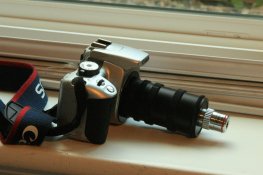
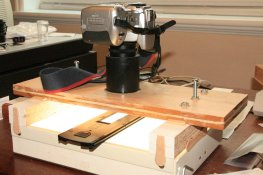
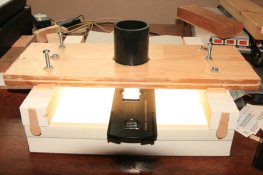

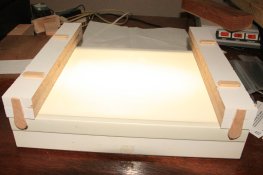
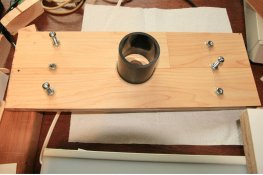
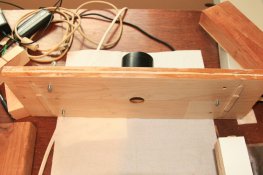

 .
.

